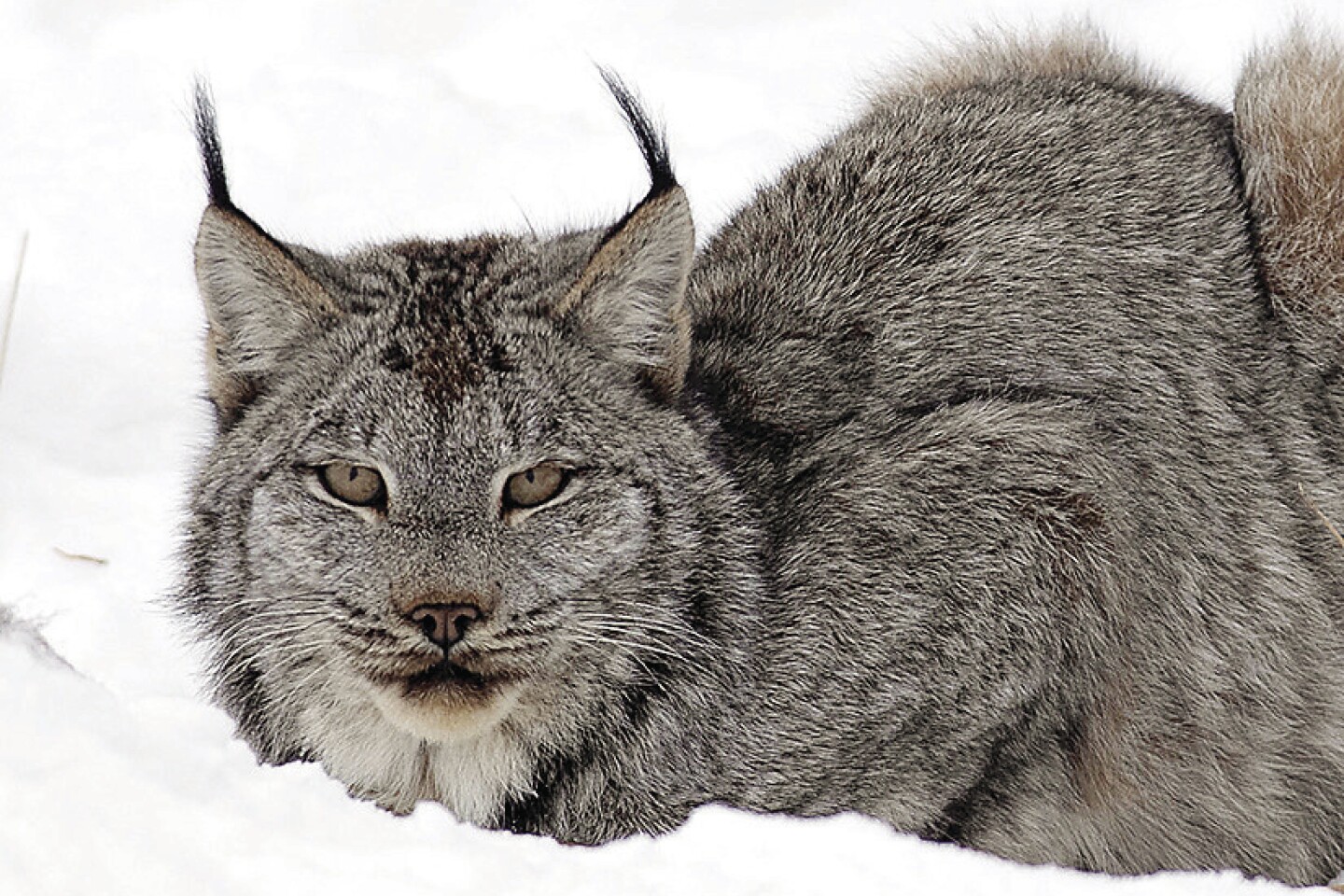DULUTH — Though low in number and prone to fluctuating, Minnesota's Canada lynx population appears consistent with previous years, according to a 2024 U.S. Forest Service report and wildlife experts.
Minnesota has the third-largest lynx population in the United States, after Alaska and Maine. Current estimates for lynx vary from 100-300 individuals in the state; the ratio of Minnesota-born to Canada-born is unknown.
ADVERTISEMENT
“We’ve been doing the occupancy survey since 2014, and it’s kind of had ups and downs, but you could probably draw almost a straight line through those over that time,” said wildlife biologist Dan Ryan, who has been studying lynx since 2002.
Most lynx detections in the state occur in St. Louis, Lake and Cook counties, where all of the fieldwork of the 2024 survey took place.
“I would say they (lynx numbers) were probably lower in the 1990s, just because there weren’t that many reports,” said Ron Moen, University of Minnesota professor and Natural Resources Research Institute senior research associate. “But people are more aware now, and I would say that from 2003 on, it's been kind of status quo as far as we can tell.”

Summary of the 2024 Superior National Forest’s Canada lynx (Lynx canadensis) DNA database and population monitoring used DNA samples collected from hair, tissue and scat found by snow tracking from biologists. Specimens were entered into the Forest Service’s genetics database for lynx to document their occurrence, persistence and reproduction in Minnesota.
For the 2023-24 season, the survey identified 98 individual lynx — 44 of which were new to the database, including 25 kittens.
The elusive cat species has had a peripheral presence in the state for decades, but gained more notoriety in the 1970s, when prices for their pelts reached highs of $700-$800, according to Moen. It was also the peak of Minnesota lynx harvests by hunters and trappers.
Canada lynx were hunted and trapped throughout Minnesota until becoming a protected species in 1984. In 2000, they were listed as threatened under the Endangered Species Act.
ADVERTISEMENT
According to John Erb, furbearer research scientist for the DNR, from 1978 to 1983, nearly 50 lynx were legally harvested in Minnesota and none were older than 3 1/2.
“We don’t have enough samples that I could say, 'average lifespan is 5 years or 6 or 4,'" Erb said. "But my bet is there aren’t many lynx that live past 6 or 7.
“It’s a tough life to be a carnivore in a northern environment,” he continued. “Very few of these species are living to be 5 and beyond.”
Gauging the population of Canada lynx in Minnesota requires knowledge of another Northland critter: the snowshoe hare, which constitutes around 90% of a lynx’s diet. A 2008 lynx scat analysis conducted in Northeastern Minnesota, co-authored by Moen, found up to 97% of scat specimens studied contained hare remains.
Snowshoe hares have famously cyclical population booms and busts, with hare numbers reaching an apex and crashing within 10-year periods. When hares become scarce, lynx either die or move in search of food — sometimes driving them into Minnesota from Canada.
“That means every five or every 10 years, they’re going through these tight bottlenecks where it's tough to survive,” Erb said. “They quit reproducing, they quit having kittens, the adults have trouble surviving.”
When hares are up, lynx eventually come up, and when the hare numbers go down, lynx go down, kind of lagging behind.

Snowshoe hares provide more calories than other potential prey like squirrels and birds. Lynx are especially adept at hunting hares, as their large, fur-covered paws allow them to walk on top of snow, acting like snowshoes. Compared to similarly sized predators such as bobcats — frequently misidentified as lynx — this adaptation allows lynx to thrive during periods of high snowfall, while lower snow levels mean more competition for food from other predators.
ADVERTISEMENT
Though the two species’ populations are still dependent on one another, the lynx-hare cycle became less pronounced for reasons unknown to biologists after the harvest peak in the late 1970s.
“It’s just not very dramatic,” Erb said. “It’s not a big cycle like it used to be; it's sort of a little bump.”
Theories about the dampened cycle range from habitat and climate changes to increased predation of hares from other predators. According to Erb, conservation efforts within the past few decades have caused increased bobcat, fisher, coyote and fox populations — more competition with lynx in the cat’s southern range, which includes Minnesota.
“Compared to 50 years ago, we had nearly eradicated a lot of predators,” Erb said. “A lot of those species have rebounded and are doing OK."
When hare populations crash, these predators will move to other sources of food — a behavior not exhibited in lynx to any major extent.
The 2024-25 survey is underway. According to Ryan, there appear to be fewer lynx occurrences this season compared to last, which saw higher trends of lynx than usual.
“This winter, we’re collecting that information now and we think we’re seeing maybe the start of a decline a little bit, which is kind of natural and expected,” Ryan said. “When hares are up, lynx eventually come up, and when the hare numbers go down, lynx go down, kind of lagging behind.
ADVERTISEMENT
“So, we don’t have any information for this winter yet," Ryan said, "but it kind of seems like maybe we’re starting to see some lower snowshoe hare numbers, so maybe we’re going to start going through a bit of a decline.”








